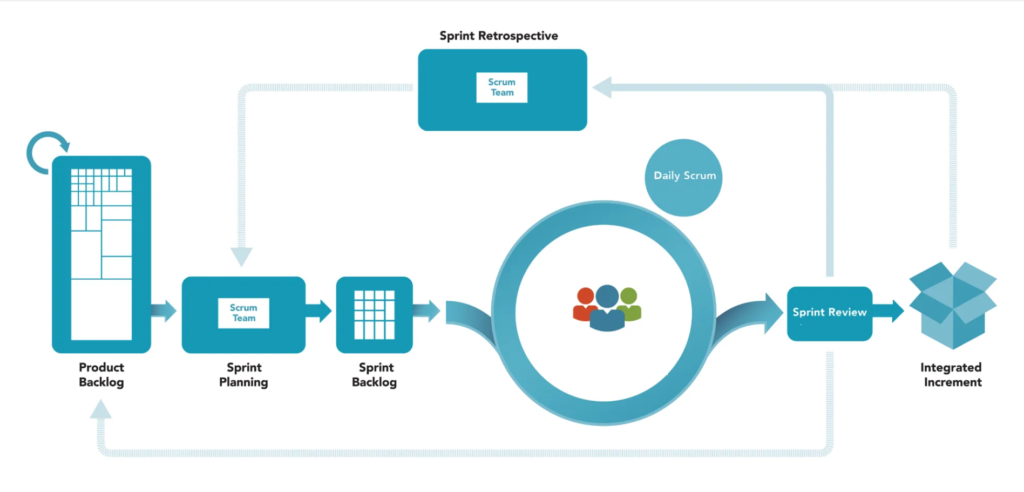Scrum is an agile framework for managing complex projects. It originated in the software development industry but has since been applied to various domains such as product development, marketing, artificial intelligenece and education. Scrum emphasizes iterative and incremental development, collaboration, and flexibility in responding to change.
Core Concepts:
- Roles:
- Product Owner: Represents the stakeholders and defines the features and priorities of the product.
- Scrum Master: Facilitates the Scrum process, removes impediments, and coaches the team.
- Development Team: Self-organizing, cross-functional group responsible for delivering increments of the product.
- Artifacts:
- Product Backlog: Prioritized list of all desired work on the project.
- Sprint Backlog: Subset of items from the Product Backlog selected for a specific Sprint.
- Increment: A potentially shippable product functionality created during a Sprint.
- Events:
- Sprint Planning: Collaborative meeting where the team plans the work to be done in the upcoming Sprint.
- Daily Stand-up: Short daily meeting for the team to synchronize activities and plan the day’s work.
- Sprint Review: Meeting at the end of a Sprint to review and demonstrate the Increment to stakeholders.
- Sprint Retrospective: Meeting at the end of a Sprint for the team to reflect on their processes and identify improvements.
Principles:
- Empirical Process Control: Scrum is based on the three pillars of transparency, inspection, and adaptation. Progress is measured through frequent inspection and adaptation of the product and process.
- Iterative and Incremental: Work is done in short, fixed-length iterations called Sprints, typically lasting 2-4 weeks. Each Sprint delivers a potentially shippable product increment.
- Self-Organizing Teams: Teams are empowered to organize and manage their own work. They decide how to accomplish their work and are responsible for delivering the product increment.
- Collaboration: Scrum emphasizes collaboration between stakeholders, the Product Owner, the Scrum Master, and the Development Team. This collaboration ensures alignment and delivers value to the customer.
Benefits:
- Flexibility: Scrum allows for adaptability to changing requirements and priorities, enabling teams to respond quickly to feedback and deliver value early and often.
- Transparency: The Scrum framework promotes transparency by making the progress, challenges, and risks visible to all stakeholders through artifacts such as the Product Backlog, Sprint Backlog, and Increment.
- Improved Quality: By focusing on delivering potentially shippable increments at the end of each Sprint, Scrum encourages a focus on quality and ensures that the product meets the customer’s needs.
- Increased Productivity: Scrum’s iterative approach and emphasis on collaboration and self-organization can lead to higher productivity and faster time-to-market for products and projects.
Overall, Scrum provides a structured framework for teams to deliver value in a collaborative and adaptive manner, making it a popular choice for organizations seeking to embrace agile principles and practices.


